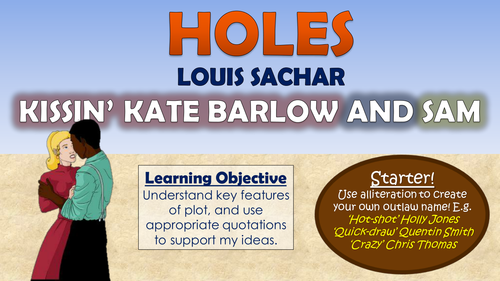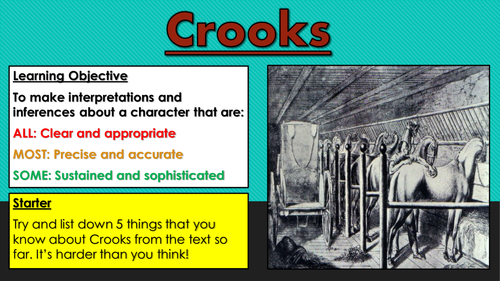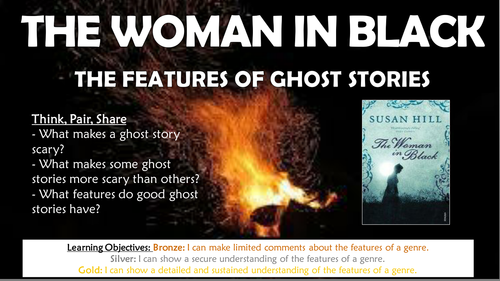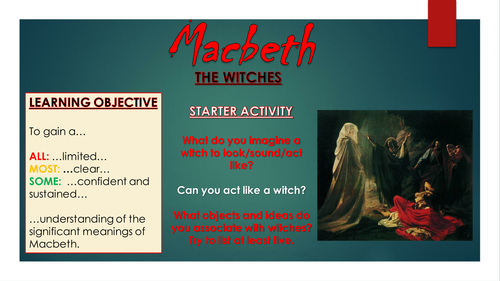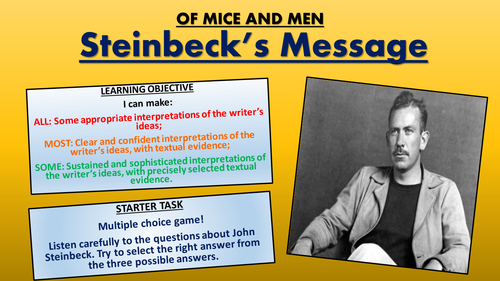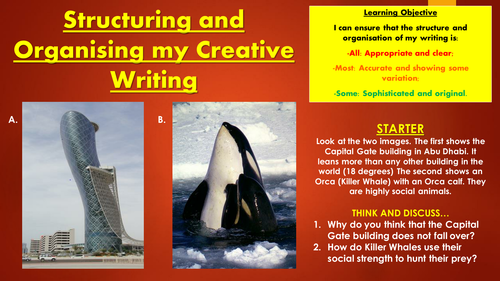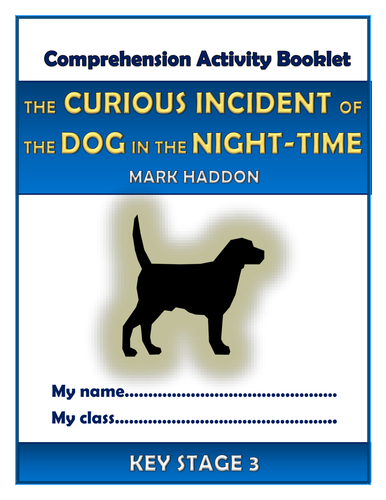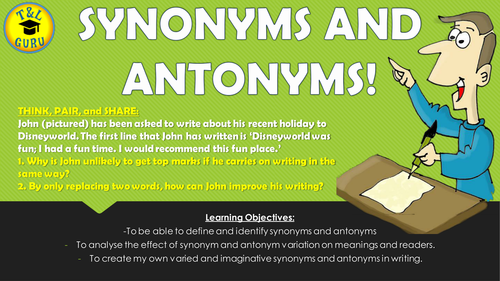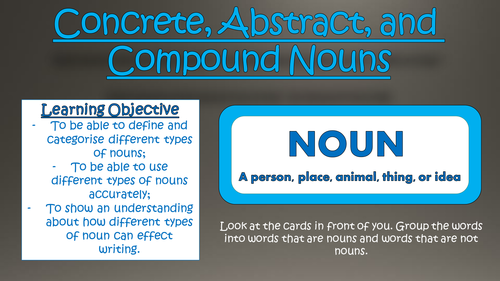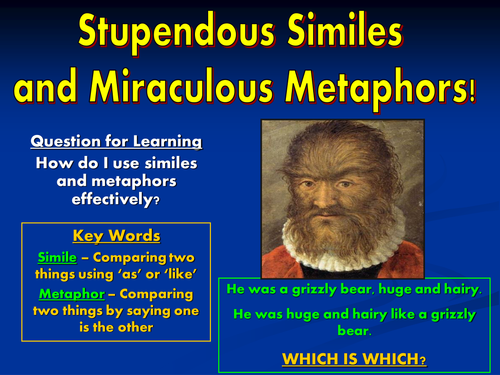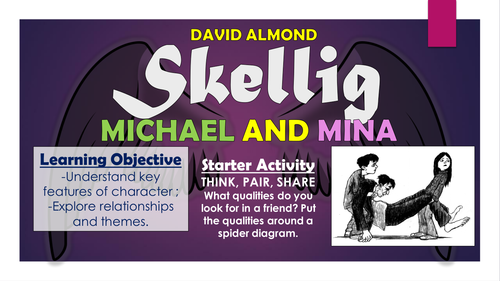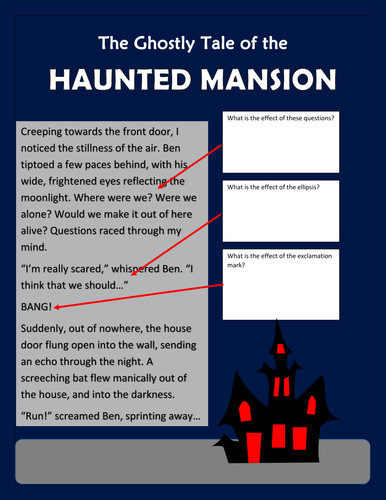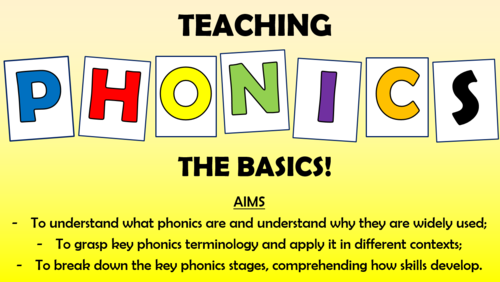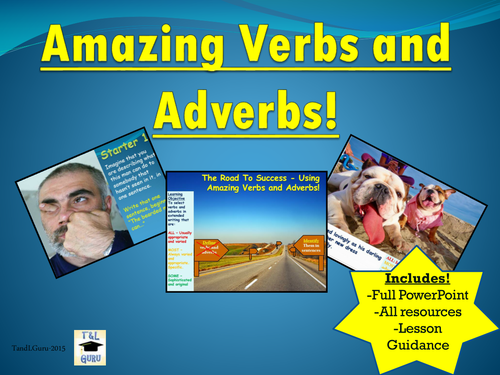
3k+Uploads
1884k+Views
2223k+Downloads
Literacy for early childhood

Holes - Kissin' Kate Barlow and Sam!
This engaging and informative lesson helps students to understand the key events of the sub-plot in Louis Sachar’s 'Holes' - the story of Kissin’ Kate Barlow and Sam. Students demonstrate their comprehension of the key events in Kate and Sam’s life, before forming their own opinion on Kissin’ Kate’s justification for becoming an outlaw.
The lesson follows a step-by-step learning journey, in which children learn through:
- Reading and understanding the selected extracts to comprehend the key events of the sub-plot;
- Storyboarding the key events (using the template provided) to demonstrate their understanding of key quotes and ideas;
- Using textual evidence to show a deeper understanding of the sub-plot, considering the writer's ideas and the historical context;
- Forming their own viewpoint about Kissin' Kate's actions through a writing to argue piece;
- Peer assessing each other's learning attempts;
Included is:
- Whole lesson PowerPoint - colourful and comprehensive;
- Storyboard Template;
- Selected extracts - Chapters 23, 25, and 26;
- Analysis of the Sub-Plot worksheet (and student answer sheet);
- Comprehensive lesson plan.
There are also opportunities for group learning, speaking and listening, peer assessment, and whole class discussion. I originally used these resources with year 7 and 8 classes, however colleagues have used them for between years 4 and 9 with minimal adaptations.
All images are licensed for commercial use, and image rights are listed on the last page of the presentation.

Of Mice and Men: Characterisation of Crooks
This engaging and informative lesson aims to improve students' knowledge and understanding of the character of Crooks in Steinbeck's Of Mice and Men: His dreams, his loneliness, and how his plight is a product of living in 1930s America. The lesson also aims to improve students' analytical skills, so that they can demonstrate sustained and sophisticated interpretations of the character.
This pack includes the full lesson presentation, with tasks and key information, an extract from the text with close reading questions, a writing to analyse help-sheet, and full teacher guidance. The learning journey is clear and progressive, following a pathway of increasingly more difficult tasks, including:
- An opening task to ascertain what is known about Crooks, and racism in 1930s America
- An extract from the text that highlights some of his characteristics and his loneliness.
- Questions to encourage students to infer and deduce hidden meanings, and understand Steinbeck's message,
- Joint creation of an analysis success criteria;
- An opportunity to answer an exam style question based upon the character of Crooks;
- A chance to peer assess against the success criteria.
All images are licensed for commercial use, and are cited on the final slide of the presentation.
You can choose to buy this resource alone, or as part of the 'Of Mice and Men - All Lessons and Scheme' bundle, which contains seven full lessons, resources, teachers notes, and PowerPoint presentations, plus a Pointless Of Mice and Men game, for just £5!

Of Mice and Men - The Themes of Dreams and Loneliness
This engaging and interesting lesson aims to improve students' knowledge of the main themes (Dreams and Loneliness) in John Steinbeck's Of Mice and Men. It also aims to build their skills in retrieving information from texts, understanding the writer's ideas and opinions, and making precise and confident interpretations about texts.
The lesson uses a range of tasks, that require students to use their visual and interactive skills. It follows this learning journey:
- Understanding what dreams and loneliness are, and how we each experience them;
- Defining themes and understanding how writers use them;
- Understanding how and why themes are used in other famous texts;
- Retrieving evidence from the text to demonstrate where the characters experience dreams and loneliness;
- Analysing how the themes are used to help get across John Steinbeck's ideas about 1930s America;
- Evaluating each others' analytical attempts.
The resource includes a comprehensive and visually engaging PowerPoint presentation, a worksheet for recording the retrieved quotations, a helpful template for the main task, and a lesson plan/ teacher guidance sheet.
All images in this resource are licensed for commercial use, and are cited on the final slide of the lesson presentation.
You can choose to buy this resource alone, or as part of the 'Of Mice and Men - All Lessons and Scheme' bundle, which contains seven full lessons, resources, teachers notes, and PowerPoint presentations, plus a Pointless Of Mice and Men game, for just £5!

The Woman in Black: The Features of Ghost Stories!
This engaging and informative lesson enables students to show a detailed and sustained understanding of the conventions of effective ghost stories, through analysis of extracts from Susan Hill's 'The Woman in Black.' They study how individual features of subject matter (such as the setting and the hero) and language (e.g descriptive features) are used to create suspense and tension in the mind of the reader.
The lesson follows a step-by-step learning journey, in which children learn through:
- Defining the key elements of ghost stories;
- Planning a ghost story using the key features;
- Identifying the elements of ghost stories within key extracts of The Woman in Black;
- Analysing the effectiveness of Hill's features of ghost stories in The Woman in Black;
- Peer assessing each other's learning attempts.
Included is:
- Whole lesson PowerPoint - colourful and comprehensive;
- Extracts from the blurb and Chapter 1 of The Woman in Black;
- Template for creating their own ghost stories;
- Analysis template with success criteria for creating well-structured responses;
- Comprehensive lesson plan.
There are also opportunities for group learning, peer assessment, and whole class discussion. This was originally taught to middle-ability year 10 groups, but can easily be differentiated for groups of different ages and abilities.
All images are licensed for commercial use, and image rights are listed on the last page of the presentation.

Macbeth: The Witches
This engaging and informative lesson enhances students' skills in understanding the significant meanings in William Shakespeare's Macbeth, and in particular the influence of the deceitful and mysterious weird sisters. Students gain an understanding of some of the attitudes towards witches in Shakespeare's times, and attempt to link this knowledge to the events of the text. They also engage with Shakespeare's intentions in utilising dramatic elements to reveal the witches use of the supernatural and deceit.
The lesson follows a clear and logical learning journey, involving progressively more challenging tasks in which students:
- Portray their understanding of witches and witchcraft;
- Learn more about witches in a historical context through a fun 'true or false' game;
- Define, identify, and understand dramatic irony;
- Read sections of Macbeth and complete tasks to demonstrate their understanding;
- Answer key questions about the witches that test their knowledge in relation to each of the English assessment outcomes;
- Evaluate a modelled example of an analytical paragraph in relation to the witches;
- Analyse the witches' characteristics in their own responses;
- Evaluate each others' analytical responses.
All images are cited on the final slide of the presentation, and are licensed for commercial use.

Holes - KS2 Comprehension Activity Booklet!
This resource booklet contains a wide range of age-appropriate, engaging, and meaningful comprehension activities for use throughout the reading of Louis Sachar's 'Holes.' Teachers have found them particularly useful in comprehension or guided reading sessions. They are perfect for aiding the progress of children towards meeting the upper KS2 expectations within the new National Curriculum framework. Children love learning from these resources, whilst they are also of great use to teachers, as there is explicit information within each task regarding which comprehension strands the task is designed to demonstrate. They also relate to key extracts, characters, and themes from the story, ensuring that children gain a deep understanding of the text.
Activities within the booklet include:
- 'An Interview with Stanley Yelnats' - to enable students to demonstrate that they can: 'Understand what is read by drawing on information from more than one paragraph, identifying key details that support the main ideas, and using quotations for illustration;'
- 'Sachar's Description' - to enable students to demonstrate that they can: 'Explain meanings of words that they know and ask the meaning of new words. Link the meaning of new words to words that they already know;'
- 'Yellow-Spotted Lizards!' - to enable students to demonstrate that they can: 'Understand what is read by drawing on information from more than one paragraph, identifying key details that support the main ideas, and using quotations for illustration;'
- 'Figurative Language in Holes' - to enable students to demonstrate that they can: 'Discuss and evaluate how authors use language, including figurative language, to create an impact on the reader.'
Plus many, many more activities (the booklet is 21 pages in length!) I've also added it as a PDF in case the formatting differs on your computer.
All images are licensed for commercial use, and are cited on a separate document (included).

Macbeth: The Context of Macbeth
This engaging and interesting lesson aims to improve students’ understanding of the context of the of William Shakespeare’s Macbeth. Some of the primary topics that are addressed are William Shakespeare himself, James I and superstition, witches and witchcraft, religion, mortality rates, and the theatre. This knowledge should enable students to make convincing links between the play and the events of the time. It is a vital lesson in any Macbeth theme that can be taught before, during, or after reading.
The lesson uses a range of tasks, that require students to be visual and interactive learners. It follows this learning journey:
- Understanding who William Shakespeare was, and remembering key details about his life;
- Identifying words and phrases that he coined that are still in use today;
- Taking part in a quiz about the some of the more basic key events and ideas of the time;
- Researching the key events of the time (e.g. witch-hunts and the ascension of James I as King) and understanding which ideas were prominent. (e.g. divine right and religion)
- Utilising speaking and listening skills in order to communicate gathered knowledge, and obtain knowledge from others.
- Evaluating the learning in the lesson.
All images in this resource are licensed for commercial use, and are cited on the final slide of the lesson presentation.

Of Mice and Men: Steinbeck's Message
This engaging and interesting lesson aims to improve students' knowledge of John Steinbeck's key messages in his novella Of Mice and Men. It also aims to build their skills in retrieving information from texts, considering the outcomes about the characters, and making precise and confident interpretations about Steinbeck's intentions.
The lesson uses a range of tasks, that require students to use their visual and interpersonal skills. It follows this learning journey:
- Investigating the life of John Steinbeck, including his influences, experiences, and beliefs;
- Finding relevant quotations to ascertain which characters fulfilled their dreams, and what this could tell us about Steinbeck's message;
- Completing analysis paragraphs on how Steinbeck reveals his message through the final chapters of the text, using a template and a success criteria;
- Evaluating each others' argumentative attempts.
The resource includes a comprehensive and visually engaging PowerPoint presentation, a worksheet to decipher which characters achieved their dreams, a template and success criteria for the main task, and a lesson plan/ teacher guidance sheet.
All images in this resource are licensed for commercial use, and are cited on the final slide of the lesson presentation.
You can choose to buy this resource alone, or as part of the 'Of Mice and Men - All Lessons and Scheme' bundle, which contains seven full lessons, resources, teachers notes, and PowerPoint presentations, plus a Pointless Of Mice and Men game, for just £5!

Structuring and Organising Creative Writing
This highly engaging and informative double lesson (around 1.5 to 2 hours of teaching materials) helps students to build skills in demonstrating appropriate, sophisticated, and original structures in their writing, and provides them with theories and techniques to help them to organise their writing adequately.
I wrote this lesson because I noticed that there are an extremely high volume of students that approach extended writing tasks (even in their GCSEs) with practically no sense of organisation. Even though they have clearly learnt a number of writing techniques from their teachers, their writing can be extremely short, repetitive, and in some cases the topic is confused. This lesson aims to address each of those issues.
Students learn:
- What structure and organisation mean;
- Narrative structure theory and 'plot mountain;'
- How time order can effect a creative text;
- How to expand using the five key senses;
- How and when to use paragraphing;
- Plan for their own extended piece of writing;
Included are all worksheets, and detailed and visual PowerPoint presentation, which explains each concept clearly, and a lesson plan for teacher guidance.
Alternatively, you can buy the Descriptive Writing Big Bundle (All descriptive devices lessons, structuring and organising writing lesson, capturing the readers attention lesson, and the literacy writing mat) for £5.
All images are licensed for commercial use, and authors are cited on the final slide.

The Curious Incident of the Dog in the Night-time KS3 Comprehension Activities Booklet!
This resource booklet contains a wide range of age-appropriate, engaging, and meaningful comprehension activities for use throughout the reading of Mark Haddon's 'The Curious Incident of the Dog in the Night-time.' Teachers have found them particularly useful in comprehension or guided reading sessions. They are perfect for aiding the progress of children towards meeting the KS3 expectations within the new National Curriculum framework. Children have found these resources extremely engaging, and for teachers there is explicit information within each task regarding which comprehension strands the task is designed to demonstrate. They also relate to key extracts, characters, and themes from the story, ensuring that children gain a deep understanding of the text.
Activities within the booklet include:
- 'Context: Asperger's Syndrome' - to enable students to demonstrate that they can: 'Know the purpose, audience and context of the writing and drawing on this knowledge to support comprehension.'
- 'Haddon's Description - The Police Station' - to enable students to demonstrate that they can: 'Know how language, including figurative language, vocabulary choice, grammar, text structure and organisational features, present meaning.'
- 'Ed Boone' - to enable students to demonstrate that they can: 'Study setting, plot, and characterisation, and the effects of these.'
- 'Vocabulary Inspector' - to enable students to demonstrate that they can: 'Learn new vocabulary, relating it explicitly to known vocabulary and understanding it with the help of context and dictionaries.'
Plus many, many more activities (the booklet is 21 pages in length!) I've also added it as a PDF in case the formatting differs on your computer.
All images are licensed for commercial use, and are cited on a separate document (included).

Synonyms and Antonyms!
This detailed and engaging lesson enables students to gain an understanding of what synonyms and antonyms are, and why knowledge of them is important when writing. Students also learn to use a variation of synonyms and antonyms in their own writing, for both clarity and effect.
Students learn through a number of fun and interactive tasks, which enable them to:
- Define and exemplify synonyms and antonyms;
- Identify the synonyms and antonyms for a range of different words;
- Understand and analyse how synonyms and antonyms can be used for clarity and effect;
- Create a written piece using a variety of synonyms and antonyms for clarity and effect;
- Evaluate their use of different synonyms and antonyms.
The resources include:
-Visually engaging and comprehensive whole-lesson presentation;
-Resources for the card-sorting activity;
-A model example and analysis worksheet;
-Step-by-step lesson plan.
All images are licensed for commercial use, and are cited on the final page of the slide.

Concrete, Abstract, and Compound Nouns!
This interesting and engaging lesson enables students to be able to define and categorise different types of nouns, to be able to use different types of nouns accurately, and to show an understanding about how different types of noun can affect writing. This knowledge is of particular importance when working through the new National Curriculum.
The lesson follows a clear, logical, bite-size learning journey, which guides students towards differentiated learning objectives. Over the course of this journey, they become able to:
- Define what concrete, abstract, and compound nouns are;
- Identify and categorise different concrete, abstract, and compound nouns;
- Write accurately using a range of concrete, abstract, and compound nouns, to increase the depth and variety of their writing;
- Peer assess each other's learning attempts.
This resource pack includes:
- A visually engaging whole-lesson PowerPoint presentation;
- Word cards for sorting;
- Venn diagram mat for card-sorting activity
- Clear and interesting worksheets to record student responses;
- A detailed lesson plan, complete with what the teacher and students should aim to achieve at each stage of the lesson.
All images are licensed for commercial use, and are cited on the final slide of the PowerPoint/ the bottom of worksheets.

Private Peaceful - KS3 Comprehension Activities Booklet!
This resource booklet contains a wide range of age-appropriate, engaging, and meaningful comprehension activities for use throughout the reading of Michael Morpurgo’s ‘Private Peaceful.’ Teachers have found them particularly useful in comprehension or guided reading sessions. They are perfect for aiding the progress of children towards meeting the KS3 expectations within the new National Curriculum framework. Children have found these resources extremely engaging, and for teachers there is explicit information within each task regarding which comprehension strands the task is designed to demonstrate. They also relate to key extracts, characters, and themes from the story, ensuring that children gain a deep understanding of the text.
Activities within the booklet include:
- ‘Context: World War One’ - to enable students to demonstrate that they can: ‘Know the purpose, audience and context of the writing and drawing on this knowledge to support comprehension.’
- ‘Morpurgo’s Description’ - to enable students to demonstrate that they can: ‘Know how language, including figurative language, vocabulary choice, grammar, text structure and organisational features, present meaning.’
- ‘Horrible Hanley’ - to enable students to demonstrate that they can: ‘Study setting, plot, and characterisation, and the effects of these.’
- ‘Vocabulary Inspector’ - to enable students to demonstrate that they can: ‘Learn new vocabulary, relating it explicitly to known vocabulary and understanding it with the help of context and dictionaries.’
Plus many, many more activities (the booklet is 21 pages in length!) I’ve also added it as a PDF in case the formatting differs on your computer.
All images are licensed for commercial use, and are cited on a separate document (included).

Stupendous Similes and Miraculous Metaphors!
This is an exciting and engaging lesson/set of tasks aiming to build students' skills at using similes and metaphors in their writing . It was taught during an observation lesson where the teacher received an Outstanding judgement.
Students learn to:
- Define and give examples of what similes and metaphors are;
- Identify similes and metaphors on funny posters and captions;
- Analyse what makes similes and metaphors effective;
- Create their own simile and metaphor filled writing piece;
- Peer assess and learn through fun interactive tasks.
It comes complete with:
- Engaging and visual PowerPoint to guide students (and teacher!) through the lesson;
- Colourful and thought-provoking worksheet for the main analysis task;
- Lesson plan/ teacher guidance sheet, which goes through the lesson step-by-step;
- Resources to enable the teacher to make 'flags' for the introductory task.
All pictures are licensed for commercial use, and image authors cited on the final slide.
This lesson can also be bought as part of the Descriptive Devices bundle for just £5. The bundle leads students through each language device needed in order to write to describe confidently.
Alternatively, you can buy the Descriptive Writing Big Bundle (All descriptive devices lessons, structuring and organising writing lesson, capturing the readers attention lesson, and the literacy writing mat) for £6.

Skellig - Michael and Mina!
This engaging and informative lesson helps students to make detailed interpretations about two of the main characters in David Almond’s Skellig: Michael and Mina. In particular, students comprehend the character traits of the two characters, before analysing the development of their relationship over the course of the story.
The lesson follows a step-by-step learning journey, in which children learn through:
- Defining and exemplifying the key character traits of both Michael and Mina;
- Reading and tracking Michael and Mina's relationship development throughout the story;
- Analysing how and why Michael and Mina's relationship becomes so strong by the end of the story;
- Peer assessing each other's learning attempts;
Included is:
- Whole lesson PowerPoint - colourful and comprehensive;
- Character Profile Sheets - Michael and Mina (pdf and word);
- Relationship Development Graph (pdf and word);
- Essay Template;
- Comprehensive lesson plan.
There are also opportunities for group learning, speaking and listening, peer assessment, and whole class discussion. I originally used these resources with a year 7 class, however colleagues have used them for between years 4 and 9 with minimal adaptations.
All images are licensed for commercial use, and image rights are listed on the last page of the presentation.

Ellipses, Question Marks, and Exclamation Marks!
This interesting and engaging lesson enables students to understand what ellipses, question marks, and exclamation marks indicate, and determine where they should be used. They also learn to understand the effect of these punctuation forms in writing, and develop the skills to use these punctuation forms accurately in my own writing.
Over the course of their learning journey, students:
- Define and exemplify what ellipses, question marks, and exclamation marks are;
- Identify where these punctuation marks should be placed in writing;
- Correctly place ellipses, question marks, and exclamation marks into unpunctuated sentences;
- Analyse the effect of these punctuation marks upon sentences and wider texts;
- Use ellipses, question marks, and exclamation marks accurately and with subtlety in their own writing;
- Peer and self assess each other's writing attempts.
The resources include:
-Visually engaging whole-lesson PowerPoint;
-Placing Punctuation worksheet (and teacher answer sheet);
-A model example of an ellipsis, question mark, and exclamation mark-filled piece of writing for analysis;
-Helpful and comprehensive step-by-step lesson plan.
All images are licensed for commercial use, and are cited on the final page of the slide.

Much Ado About Nothing - KS3 Comprehension Activities Booklet!
This resource booklet contains a wide range of age-appropriate, engaging, and meaningful comprehension activities for use throughout the reading of William Shakespeare's 'Much Ado About Nothing.' Teachers have found them particularly useful in comprehension or guided reading sessions. They are perfect for aiding the progress of children towards meeting the KS3 expectations within the new National Curriculum framework. Children have found these resources extremely engaging, and for teachers there is explicit information within each task regarding which comprehension strands the task is designed to demonstrate. They also relate to key extracts, characters, and themes from the story, ensuring that children gain a deep understanding of the text.
Activities within the booklet include:
- 'Context: Life in Shakespeare's Times' - to enable students to demonstrate that they can: 'Know the purpose, audience and context of the writing and drawing on this knowledge to support comprehension.'
- 'Shakespeare's Description' - to enable students to demonstrate that they can: 'Know how language, including figurative language, vocabulary choice, grammar, text structure and organisational features, present meaning.'
- 'Hero' - to enable students to demonstrate that they can: 'Study setting, plot, and characterisation, and the effects of these.'
- 'Vocabulary Inspector' - to enable students to demonstrate that they can: 'Learn new vocabulary, relating it explicitly to known vocabulary and understanding it with the help of context and dictionaries.'
Plus many, many more activities (the booklet is 22 pages in length!) I've also added it as a PDF in case the formatting differs on your computer.
All images are licensed for commercial use, and are cited on a separate document (included).

The Twits - Roald Dahl - KS1 Comprehension Activities Booklet!
This resource booklet contains a wide range of age-appropriate, engaging, and meaningful comprehension activities for use throughout the reading of Roald Dahl's 'The Twits.' Teachers have found them particularly useful in comprehension or guided reading sessions. They are perfect for aiding the progress of children towards meeting the KS1 expectations within the new National Curriculum framework. Children love learning from these resources, whilst they are also of great use to teachers, as there is explicit information within each task regarding which comprehension strands the task is designed to demonstrate. They also relate to key extracts, characters, and themes from the story, ensuring that children gain a deep understanding of the text.
Activities within the booklet include:
- 'Feed Mr. Twit' - to enable students to demonstrate that they can: 'talk about their favourite words and phrases in the story;'
- 'Dahl's Description' - to enable students to demonstrate that they can: 'Explain meanings of words that they know and ask the meaning of new words. Link the meaning of new words to words that they already know;'
- 'The Mugglewumps' - to enable students to demonstrate that they can: 'Say what might happen next in a story based on what has happened so far;'
- 'Mr. and Mrs. Twit' - to enable students to demonstrate that they can: 'Enjoy reading and discussing the order of events in books and how items of information are related.'
Plus many, many more activities (the booklet is around 20 pages in length!) I've also added it as a PDF in case the formatting differs on your computer.
All images are licensed for commercial use, and are cited on a separate document (included).

Teaching Phonics: The Basics CPD Session!
This informative, engaging CPD session is intended to offer a valuable introduction to phonics for teachers and support staff. It aims to enable participants to:
-To understand what phonics are and understand why they are widely used;
-To grasp key phonics terminology and apply it in different contexts;
-To break down the key phonics stages, comprehending how skills develop.
The session is aimed at those who are new to phonics. I myself moved from secondary to primary, and can understand how daunting phonics schemes can appear! These resources, whilst detailed, present ideas in a simple way, helping to make key ideas understandable. Included is:
A 27-slide colourful, clear PowerPoint presentation, including post-CPD quiz;
Resources for an optional card-sorting activity, to learn appropriate phonics terminology;
A comprehensive phonics helpsheet, detailing most of the main points from the session.
I hope that you find these resources helpful. Many thanks!

Amazing Verbs and Adverbs!
This is an exciting and engaging lesson/set of tasks aiming to build students' skills at using varied verbs and adverbs in their writing . It was taught during an observation lesson where the teacher received an Outstanding judgement.
Students learn to:
- Define and give examples of what verbs and adverbs are;
- Identify verbs and adverbs on funny posters and captions;
- Analyse what makes verbs and adverbs effective;
- Create their own verb and adverb filled writing piece;
It comes complete with:
- Engaging and visual PowerPoint to guide students (and teacher!) through the lesson;
- Colourful and thought-provoking worksheet for the main analysis task;
- Lesson plan/ teacher guidance sheet, which goes through the lesson step-by-step;
- Resources to enable the teacher to make 'flags' for the development task.
All pictures are licensed for commercial use, and image authors cited on the final slide.
This lesson can also be bought as part of the Descriptive Devices bundle for just £5. The bundle leads students through each language device needed in order to write to describe confidently.
Alternatively, you can buy the Descriptive Writing Big Bundle (All descriptive devices lessons, structuring and organising writing lesson, capturing the readers attention lesson, and the literacy writing mat) for £6.

